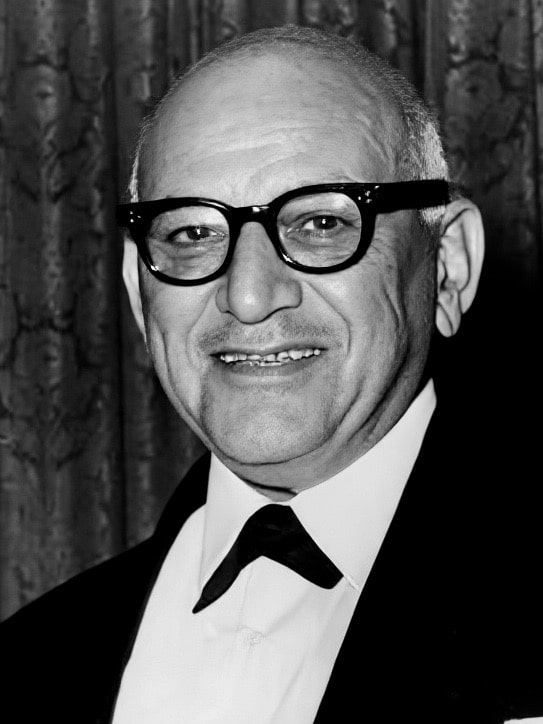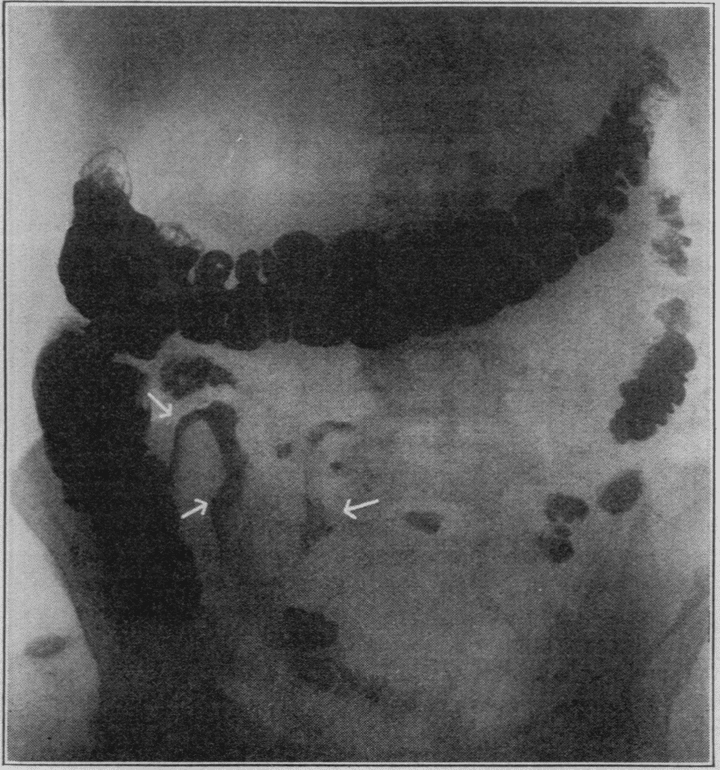Gordon D. Oppenheimer

Gordon David Oppenheimer (1900-1974) was an American surgeon and urologist.
GD Oppenheimer was a distinguished American urologist, clinical researcher, and one of the three authors of the foundational 1932 description of regional ileitis, later named Crohn’s disease. While his professional focus eventually shifted to urology, Oppenheimer’s early work in pathology and gastrointestinal research was integral to the delineation of this important condition.
Born in New York City, Oppenheimer earned his undergraduate degree from Columbia College in 1919 and graduated from Columbia College of Physicians and Surgeons in 1922. He completed a two-year internship at Mount Sinai Hospital, where he entered the pathology laboratory and began his collaboration with Leon Ginzburg on granulomatous lesions of the terminal ileum. Their combined work, later expanded by Burrill B. Crohn, resulted in the landmark 1932 JAMA paper that described what became known as Crohn’s disease.
Although overshadowed in eponymic naming, Oppenheimer’s laboratory analysis and pathological contributions were central to defining the disease entity. He went on to become Chief of Urology at Mount Sinai Hospital (1947–1963), publishing prolifically across surgical and urological disciplines and pioneering several innovations in renal care and peritoneal dialysis.
In addition to his hospital work, Oppenheimer served as a medical officer with the New York City Fire Department (1931–1944) and led the VA Outpatient Urology Clinic in the final years of his career. He was known for his humility, clinical acumen, and deep commitment to teaching. He died in 1974 at the age of 74.
Biography
- 1900 – Born June 30 in New York City.
- 1919 – B.S. from Columbia College.
- 1922 – M.D. from Columbia College of Physicians and Surgeons.
- 1922–1924 Completed internship at Mount Sinai Hospital.
- 1925–1931 Worked in pathology at Mount Sinai; began bowel granuloma studies with Leon Ginzburg.
- 1932 – Coauthored landmark paper “Regional Ileitis” with Crohn and Ginzburg (JAMA).
- 1933 – Published additional article in Annals of Surgery on inflammatory bowel disease.
- 1931–1944 Served as Medical Officer for New York City Fire Department.
- 1941 – Collaborated with Stephan Rosenak on early dialysis innovations at Mount Sinai.
- 1944 – Published “Urological Complications of Regional Ileitis” with Leon Ginzburg.
- 1947–1963 – Chief of Urology, Mount Sinai Hospital.
- 1963 – Retired from Mount Sinai; began work with VA Outpatient Urology Clinic in 1971.
- 1974 – Died December 9 at Mount Sinai Hospital, aged 74.
Medical Eponyms
Crohn’s disease (1932)
Crohn’s disease is a chronic, immune-mediated inflammatory bowel disease (IBD) characterized by transmural inflammation that can affect any part of the gastrointestinal tract, from the mouth to the anus. The terminal ileum and colon are most commonly involved, with a predilection for segmental (“skip”) lesions and a tendency toward complications such as strictures, fistulae, and abscess formation. Extraintestinal manifestations—including arthritis, uveitis, and erythema nodosum—are also frequently observed.
Oppenheimer was the principal pathology contributor to the identification of terminal ileitis. Alongside Leon Ginzburg (1898-1988), he catalogued 12 surgically treated cases before Burrill Bernard Crohn (1884-1983) became involved. His microscopic analysis and case series laid the groundwork for the 1932 JAMA article. Although Crohn presented the work and his name led the publication, Oppenheimer’s foundational studies were essential to its scientific credibility.
May 1932 – Oppenheimer, along with Crohn and Ginzburg present “Terminal Ileitis: A New Clinical Entity” at the AMA in New Orleans. Initially listed as Crohn’s sole paper, co-authors were added in alphabetical order, after intervention by collaborating Mount Sinai surgeon Albert Ashton Berg (1872–1950).
October 1932 – Their article is published in JAMA as “Regional Ileitis: A Pathologic and Clinical Entity” — a concise clinicopathologic description of transmural necrotising inflammation in the terminal ileum. A case series of 14 patients aged between 17-years to 52-years:
We propose to describe, in its pathologic and clinical details, a disease of the terminal ileum, affecting mainly young adults, characterized by a subacute or chronic necrotizing and cicatrizing inflammation. The ulceration of the mucosa is accompanied by a disproportionate connective tissue reaction …associated with the formation of multiple fistulas.
The disease is clinically featured by symptoms resembling those of ulcerative colitis, ie, fever, diarrhea, emaciation, and a mass in the right iliac fossa usually requiring surgical resection. The etiology is unknown.
Crohn, Ginzburg, Oppenheimer 1932

Key Medical Contrinutions
Pioneer in Urology and Renal Innovation
Oppenheimer published 69 medical papers covering topics from rectal blastomycosis to renal calculi. In 1941, he and Stephan Rosenak developed improved methods for peritoneal dialysis, and in 1952, he co-authored research on hypertensive physiology in nephrectomized dogs. His clinical breadth helped advance both basic science and applied surgical care.
Military and Public Service
Oppenheimer was Second in Command of the General Surgical Service at Mount Sinai during WWII and served 14 years as a medical officer for the NYC Fire Department, exemplifying his dedication to civic as well as academic medicine.
Mentorship and Legacy
Renowned for kindness and humility, Oppenheimer mentored generations of physicians. Residents under his guidance valued his diagnostic insight and recall his refusal to impose authority over dialogue, cultivating a collaborative clinical environment.
Major Publications
- Ginzburg L, Oppenheimer GD. Non-Specific Granulomata of the Intestines(Inflammatory Tumors and Strictures of the Bowel). Transactions of the Section on Gastroenterology and Proctology of the American Medical Association 1932; 35: 241-283
- Crohn BB, Ginzburg L, Oppenheimer GD. Regional ileitis; a pathologic and clinical entity. JAMA, 1932; 99: 1323-1329.
- Ginzburg L, Oppenheimer GD. Non-Specific Granulomata of the Intestines: Inflammatory Tumors and Strictures of the Bowel. Ann Surg. 1933; 98(6): 1046‐1062.
- Oppenheimer GD. Non-specific localized granulomatous ulcer of the jejunum. J Mt Sinai Hosp N Y. 1946; 12: 1039‐1041.
- Ginzburg L, Oppenheimer GD. Urological complications of regional ileitis. J Urol. 1948; 59(5): 948‐952.
- Rosenak SS, Oppenheimer GD. An improved drain for peritoneal lavage. Surgery. 1948 May;23(5):832.
- Narins L, Oppenheimer GD. Calcification of the vas deferens associated with Paget’s disease of bone. J Urol. 1952; 67(2): 218‐221.
References
- Dr. Gordon Oppenheimer Dies; Urologist and Surgeon Was 74. New York Times. Dec. 11, 1974
- Biel L Jr. In memoriam: Gordon D. Oppenheimer, M.D., 1900-1974. Mt Sinai J Med. 1975; 42(3): 177‐178.
- Portrait. Gordon Oppenheimer. 1969. The Arthur H. Aufses, Jr., MD Archives Catalog
Eponymous terms
- Janowitz HD. An imaginary conversation with the gang of three: a ghostly interview with Burrill B. Crohn, Leon Ginzburg, and Gordon Oppenheimer. Mt Sinai J Med. 1996 Jan;63(1):61-5.
- Aufses AH Jr. The history of Crohn’s disease. Surg Clin North Am. 2001; 81(1): 1‐vii.
- Franklin JL. Eisenhower and Crohn’s Disease. Hektoen International 2009; 1(2)
Eponym
the person behind the name
Dr. Duncan Grossman, DO is an Assistant Professor of Emergency Medicine, Icahn School of Medicine. Dr. Grossman attended the University of New England School of Medicine. His academic interests include Medical Education and Emergency Medical Services | Sinai EM |
BA MA (Oxon) MBChB (Edin) FACEM FFSEM. Emergency physician, Sir Charles Gairdner Hospital. Passion for rugby; medical history; medical education; and asynchronous learning #FOAMed evangelist. Co-founder and CTO of Life in the Fast lane | On Call: Principles and Protocol 4e| Eponyms | Books |

